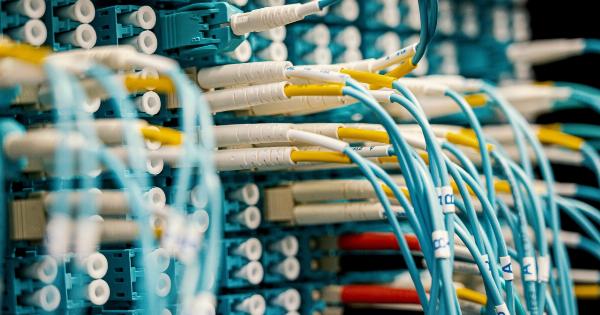As a pet owner, it is important to be aware of the potential dangers that can arise when your dog consumes seawater.
While it may be tempting to let your furry friend play in the waves at the beach and take a sip of the ocean water, it is crucial to understand why drinking seawater can be harmful to your dog’s health. In this article, we will explore the reasons why seawater ingestion can be dangerous for dogs and the potential consequences it may have on their well-being.
1. Dehydration
One of the primary reasons why drinking seawater is harmful to dogs is its high salt content. Seawater contains significantly higher levels of salt than the freshwater sources dogs are typically exposed to.
When dogs drink seawater, their bodies attempt to expel the excess salt through urine, leading to increased urination and dehydration. This can be particularly dangerous, especially if your dog does not have access to fresh drinking water to replenish lost fluids.
2. Electrolyte Imbalance
Ingesting large amounts of saltwater can lead to an electrolyte imbalance in dogs. Electrolytes are essential minerals that regulate various bodily functions, including nerve and muscle function.
When dogs drink seawater, the excessive sodium intake can disrupt the delicate balance of electrolytes in their bodies, leading to adverse effects on their overall health.
3. Kidney Damage
The kidneys play a vital role in filtering toxins and maintaining proper hydration levels in dogs. However, excessive salt intake from seawater can put a strain on your dog’s kidneys and lead to kidney damage over time.
The kidneys have to work harder to process the high salt content, which can lead to long-term complications and reduced kidney function.
4. Gastrointestinal Distress
Drinking seawater can often result in gastrointestinal distress in dogs. The high salt content irritates their digestive systems and can lead to symptoms such as vomiting, diarrhea, and abdominal pain.
These gastrointestinal issues can be uncomfortable for your furry friend and may require medical intervention to alleviate the symptoms.
5. Salt Poisoning
In severe cases, excessive salt intake from seawater can lead to salt poisoning in dogs. Salt poisoning, also known as hypernatremia, occurs when there is a dangerous increase in sodium levels within the body.
This condition can cause neurological problems, seizures, tremors, and even coma or death if left untreated. It is crucial to seek immediate veterinary care if you suspect salt poisoning in your dog.
6. Urinary Problems
Long-term effects of drinking seawater can include urinary problems in dogs. The increased salt intake can contribute to the formation of urinary crystals, which may lead to conditions like bladder stones or urinary tract infections.
These issues can be painful and may require medical intervention to relieve your dog’s discomfort.
7. Distorted Thirst Sensation
When dogs drink seawater, their thirst sensation can become distorted. As the body attempts to rid itself of the excess salt, it increases the dog’s sensation of thirst, leading them to drink even more water.
However, since seawater does not hydrate the body adequately, this can create a vicious cycle of increased saltwater consumption and dehydration.
8. Beach Hazards
Aside from the direct health consequences, there are other hazards associated with drinking seawater at the beach.
Dogs who consume too much seawater are more prone to accidents or drowning due to impaired coordination, weakness, and disorientation caused by dehydration and electrolyte imbalances. It is essential to monitor your dog closely and ensure they have access to fresh water to avoid any potential accidents.
9. Training and Discipline
Allowing your dog to drink seawater can lead to reinforcement of undesirable behaviors. If your dog becomes accustomed to drinking seawater, they may start to associate the beach or coastal areas with the opportunity to consume it.
This can be challenging when you want to train or discipline your dog, as their desire for seawater may distract them from obeying commands or staying focused.
10. Prevention and Safety Measures
To protect your dog from the harmful effects of drinking seawater, it is essential to take preventive measures and ensure their safety at the beach or coastal areas:.
– Always provide access to fresh drinking water to prevent dehydration and discourage your dog from drinking seawater.
– Keep a close eye on your dog and discourage them from consuming seawater during beach visits.
– Provide frequent opportunities for your dog to take breaks from physical activity and rest in the shade to reduce the risk of overheating and excessive thirst.
– Consider using a dog-friendly beach or designated swimming area where the water is regularly tested and safe for consumption.
– If you notice any signs of salt poisoning, dehydration, or other health issues after your dog has ingested seawater, seek immediate veterinary assistance.
Conclusion
Drinking seawater can have severe consequences for your dog’s health.
The high salt content in seawater can lead to dehydration, electrolyte imbalances, kidney damage, gastrointestinal distress, salt poisoning, urinary problems, distorted thirst sensation, and beach hazards. It is essential to take preventive measures and prioritize your dog’s safety by providing access to fresh drinking water and closely monitoring their behavior while at the beach.
By educating yourself about the potential dangers of seawater ingestion, you can ensure the well-being and longevity of your beloved canine companion.






























